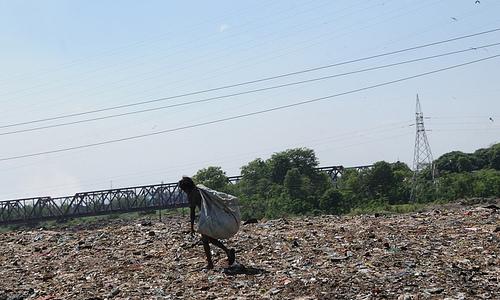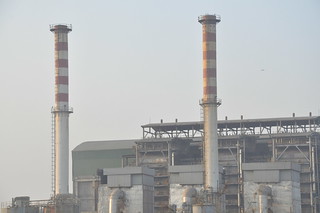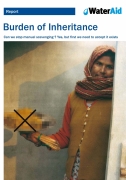
Mounds of garbage are a common sight today. Waste thrown is omnipresent in the form of rotting piles that dot our landscape, foul our rivers and pollute our wells and lakes. Even the idea of a quaint, clean village is no longer true because trash has overcome the rural-urban divide very successfully. What this waste, why is more & more of it being produced and exhibited, and how have we become adept at this? Most importantly, can we as individuals and as a society reduce this growing menace?
What is Solid Waste?
Solid waste is the unwanted or useless solid materials generated from human activities in residential, industrial or commercial areas. It may be categorised in three ways. According to its:
- origin (domestic, industrial, commercial, construction or institutional)
- contents (organic material, glass, metal, plastic paper etc)
- hazard potential (toxic, non-toxin, flammable, radioactive, infectious etc).
Solid Waste Management reduces or eliminates the adverse impact on the environment & human health. A number of processes are involved in effectively managing waste for a municipality. These include monitoring, collection, transport, processing, recycling and disposal. The quantum of waste generated varies mainly due to different lifestyles, which is directly proportional to socio economic status of the urban population.
Numbers!
In metro cities in India, an individual produces an average of 0.8 kg/ waste/ person daily. The total muicipal solid waste (MSW) generated in urban India has been estimated at 68.8 million tons per year (TPY) (0.573 million metric tonnes per day (MMT/d) in the year 2008). The average collection efficiency of MSW ranges from 22% to 60%.
MSW typically contains 51% organic waste, 17% recyclables, 11% hazardous and 21% inert waste. However, about 40% of all MSW is not collected at all and hence lies littered in the city/town and finds its way to nearby drains and water bodies, causing choking as well as pollution of surface water. Unsegregated waste collection and transportation leads to dumping in the open, which generates leachate and gaseous emissions besides causing nuisance in the surrounding environment. Leachate contaminates the groundwater as well as surface water in the vicinity and gaseous emissions contribute to global warming.
Types of Solid Waste
It can be classified into different types depending on their source:
- Municipal Solid Waste (MSW): It consists of household waste, construction and demolition debris (CnD), sanitation residue, and waste from streets, generated mainly from residential and commercial complexes. As per the MoEF it includes commercial and residential waste generated in municipal or notified areas in either solid or semi-solid form excluding industrial hazardous wastes but including treated bio-medical wastes;
- Industrial Solid Waste (ISW): In a majority of cases it is termed as hazardous waste as they may contain toxic substances, are corrosive, highly inflammable, or react when exposed to certain things e.g. gases.
- Biomedical waste or hospital waste: It is usually infectious waste that may include waste like sharps, soiled waste, disposables, anatomical waste, cultures, discarded medicines, chemical wastes, etc., usually in the form of disposable syringes, swabs, bandages, body fluids, human excreta, etc. These can be a serious threat to human health if not managed in a scientific and discriminate manner.
Solid waste management
- Centralised method: This method involves collection of municipal waste from all over the local area and by means of landfilling, dump outside the city/nagar panchayat limits. This process looks at door-to-door collection of solid waste by waste pickers who hand over to the collection team who then discard the collected waste in the landfill. The waste pickers are employees of the Municipal Corporation or Nagar Panchayat. The collection team is generally contracted out by a tendering process.
- De-centralized method: This is a model seen in a few places like Suryapet in Andhra Pradesh and Bangalore in Karnataka. The waste is collected ward-wise and is segregated at source into bio-degradable and non-biodegradable. The biodegradable waste is composted at a nearby facility by different methods of aerobic and anerobic composting. The non-biodegradable waste is further categorised into paper, plastic, metal and other waste and then further collected by recyclers for up-cycling or downcycling of products
Treatment methods for solid waste
 Thermal treatment: Incineration is the combustion of waste in the presence of oxygen, so that the waste is converted into carbon dioxide, water vapour and ash. Also labeled Waste to Energy (WtE) method, it is a means of recovering energy from the waste. It's advantages include waste volume reduction, cutback on transportation costs and reduction of greenhouse gas emissions. However, when garbage is burned, pollutants, such as mercury, lead, dioxins may be released into the atmosphere, and cause health issues.
Thermal treatment: Incineration is the combustion of waste in the presence of oxygen, so that the waste is converted into carbon dioxide, water vapour and ash. Also labeled Waste to Energy (WtE) method, it is a means of recovering energy from the waste. It's advantages include waste volume reduction, cutback on transportation costs and reduction of greenhouse gas emissions. However, when garbage is burned, pollutants, such as mercury, lead, dioxins may be released into the atmosphere, and cause health issues.- Pyrolysis and gasification: In this method, thermal processing is in complete absence of oxygen or with less amount of air.
- Biological treatment methods: This involves using micro-organisms to decompose the biodegradable components of waste. The 2 types of processes: Aerobic: This needs the presence of oxygen and includes windrow composting, aerated static pile composting & in-vessel composting, vermi-culture etc. Anaerobic digestion: Takes place in the absence of oxygen.
- Landfills and open dumping: Sanitary landfills: It is the controlled disposal of waste on land in such a way that contact between waste and the environment is significantly reduced and the waste is concentrated in a well defined area. Dumps are open areas where waste is dumped exposing it to natural elements, stray animals and birds. With the absence of any kind of monitoring and no leachate collection system, this leads to the contamination of both land and water resources.
Integrated Solid Waste Management (ISWM):
Recycling
Recycling is when waste is converted into something useful. It reduces the amount of waste that needs to be treated, the cost of its handling, its disposal to landfills and environmental impacts. It also reduces the amount of energy required to produce new products and thus helps conserve natural resources. Upcycling and downcycling are two common words used when it comes to recycling. Upcycling implies upgrading of a commodity by different processes of recycling. An example of upcycling is to make roads out of cheap plastic. Downcycling implies downgrading a commodity by different processes of recycling. An example of downcycling is breaking down of high quality plastics at high temperature into different lower quality plastics.
There are a large set of informal waste collectors in India. They are called local waste dealers or 'Kabadiwallahs'. They collect and sort dry waste into aluminium, plastic, paper, glass, etc. Each waste has a price fixed in the waste market. In some cases, these local waste dealers have tie ups with waste pickers who supply to them the waste from nearby areas. In addition to the waste pickers, the dealers also collect dry waste from individuals, apartments and institutions.
Responsibility & stakeholders
Solid Waste Management is a state subject and it is the responsibility of the state government to ensure that appropriate solid waste management practices are introduced in all the cities and towns in the state. However, SWM is a municipal function and it is the urban local bodies (ULB) that are directly responsible for it. The ULBs are required to plan, design, operate, and maintain the SWM in their respective cities/towns. India’s 4378 municipalities spend a lot of money handling waste. Between 10% to 50% of the municipal budget is allocated for SWM and between 30% to 50% of the total staff are typically engaged in SWM. This critical service, if performed poorly, results in deterioration of health, sanitation and environmental degradation. Incorrect choice of technology, lack of public participation, financial constraints, institutional weakness, are factors that prevent a ULB from providing satisfactory service. The ULBs need both support and guide to mange the solid waste in a scintific and cost effective manner.
The role of the Government is broadly to formulate policy guidelines and provide technical assistance to the states/cities whenever needed. It also assists the state governments and local bodies in human resource development and acts as an intermediary in mobilizing external assistance for implementation of solid waste management projects.
There are several NGOs, waste trade unions and experts who have become crucial stakeholders. A few well recognised people and organisations are: Chintan in Delhi, Swacha in Pune, Stree Mukti Sangathan in Mumbai, Solid Waste Management Round Table and Hasiru Dala in Bangalore.
Rules and regulations associated with SWM
Under the 74th Constitutional Amendment, Disposal and managemenf of Municipal Solid Waste is one of the 18 functional domains of the Municipal Corporations and Nagar Panchayats. The various rules and regulations for solid waste management are:
- The Bio-Medical Waste (Management And Handling) Rules, 1998
- Municipal Solid Waste (Management And Handling) Rules 2000
- The Plastic Waste (Management And Handling) Rules, 2011
- E-Waste (Management And Handling) Rules, 2011
There are other court cases that find their importance in terms of Solid Waste Management in India:
- Almitra Patel vs. Union of India
- B.L Wadhera vs. Union of India.
- Judgement of Karnataka High Court towards Mandatory Segregation at Source
Ragpickers/ manual scavenging
Waste Management also has several informal players such as ragpickers. They work in dump sites, garbage spots in local areas and trade in their collected waste with local dealers. These local dealers are called Kabadiwalahs.The large network of informal sector also aids in managing of waste effectively at local levels as the Kabadiwallahs are connected to the formal group of recyclers who come and pick up the bulk quantity of waste. There is a National Body of Ragpickers in India. They are called the NSWAI- National Solid Waste Association of India. Formed on 25th January 1996, the association is also a member of the International Solid Waste Association (ISWA), and provides a forum for the exchange of information and expertise in the field of Solid Waste Management at the international level.
In recent times, Prohibition of Employment as Manual Scavengers and their Rehabilitation Bill, 2013 has been passed in the Lok Sabha in September 2013.
Recently, Satyamev Jayate featured an episode that gives a brief understanding about the situation of Solid Waste Management in India. Watch the video below.
How each one of us can reduce waste
Waste is everybody's responsibility. A waste reduction strategy can be incorporated by each of us whether at home or at work by following the 4 Rs principle. This will not only reduce the amount of solid waste going to landfill, but turn waste into a resource & also save our fast depleting natural resources.
Reduce: At home you can begin by purchasing things with lesser packaging, more durable & refillable items, carry your own shopping bag, avoid disposable items and reduce the use of plastics. At office one can cut down on paperwork, use electronic mail for communication.
Reuse: You can donate your old clothes, books, phones and lots more. You can reuse old bottles, jars as storage bins and buy rechargeable items rather than disposable ones.
Recycle: Segregate your waste for better disposal and purchase recycled/ green products. A ton of paper from recycled material conserves about 7,000 gallons of water, 17-31 trees, 60 lb of air pollutants and 4,000 KWh of electricity. You can recycle or compost your organic waste directly at source- leaving very little waste to reach the landfill. Watch this video of Vani Murthy, who composts in her own apartment.
Recovery or reclaim: Various mechanical, biological and caloric systems and technologies can convert, reprocess or break up waste into new materials or energy. This means turning waste into fuel for manufacturing processes or equipment designed to produce energy. For example, the methane caused by rotting materials in dump sites can be recycled. Of course, this “R” is difficult for individuals to apply and applies more for industries or towns with a high volume of waste to manage.







 This report by
This report by